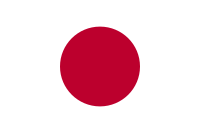
Photo from wikipedia
Abstract Introduction: Rainfall-induced floods and landslides accounted for 20.7% of all disaster events in Japan from 1985 through 2018 and caused a variety of health problems, both directly and indirectly,… Click to show full abstract
Abstract Introduction: Rainfall-induced floods and landslides accounted for 20.7% of all disaster events in Japan from 1985 through 2018 and caused a variety of health problems, both directly and indirectly, including injuries, infectious diseases, exacerbation of pre-existing medical conditions, and psychological issues. More evidence of health problems caused by floods or heavy rain is needed to improve preparedness and preventive measures; however, collecting health data surrounding disaster events is a major challenge due to environmental hazards, logistical constraints, political and economic issues, difficulties in communication among stakeholders, and cultural barriers. In response to the West Japan Heavy Rain in July 2018, Emergency Medical Teams (EMTs) used Japan - Surveillance in Post-Extreme Emergencies and Disasters (J-SPEED) as a daily reporting template, collecting data on the number and type of patients they treated and sending it to an EMT coordination cell (EMTCC) during the response. Study Objective: The aim of the study was to conduct a descriptive epidemiology study using J-SPEED data to better understand the health problems during floods and heavy rain disasters. Methods: The number and types of health problems treated by EMTs in accordance with the J-SPEED (Ver 1.0) form were reported daily by 85 EMTs to an EMTCC, where data were compiled during the West Japan Heavy Rain from July 8 through September 11, 2018. Reported items in the J-SPEED form were analyzed by age, gender, area (prefecture), and time period. Results: The analysis of J-SPEED data from the West Japan Heavy Rain 2018 revealed the characteristics of a total of 3,617 consultations with the highest number of consultations (2,579; 71.3%) occurring between Day 5 and Day 12 of the 65-day EMT response. During the response period, skin disease was the most frequently reported health event (17.3%), followed by wounds (14.3%), disaster stress-related symptoms (10.0%), conjunctivitis (6.3%), and acute respiratory infections (ARI; 5.4%). Conclusion: During the response period, skin disease was the most frequently reported health event, followed by wounds, stress, conjunctivitis, and ARIs. The health impacts of a natural disaster are determined by a variety of factors, and the current study’s findings are highly context dependent; however, it is expected that as more data are gathered, the consistency of finding will increase.
Journal Title: Prehospital and Disaster Medicine
Year Published: 2022
Link to full text (if available)
Share on Social Media: Sign Up to like & get
recommendations!